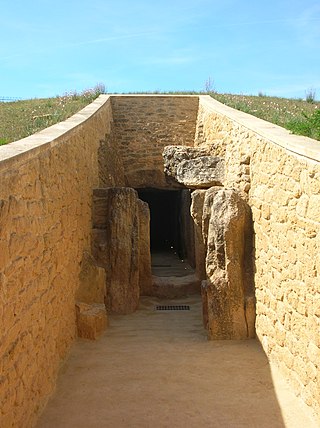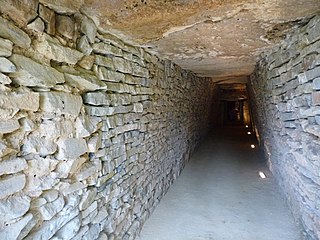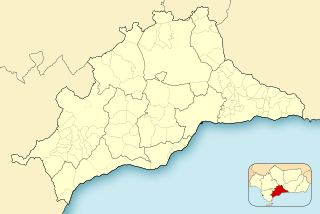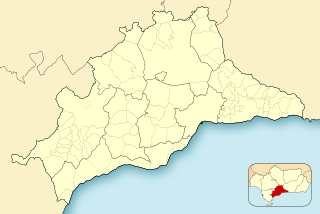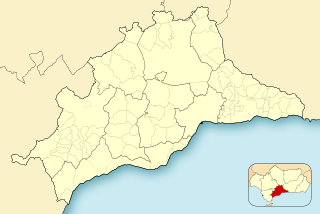8 Sights in Antequera, Spain (with Map and Images)
Legend
Premium Sights
Book tickets, guided tours and activities in Antequera.
Guided Free Walking Tours
Book free guided walking tours in Antequera.
Welcome to your journey through the most beautiful sights in Antequera, Spain! Whether you want to discover the city's historical treasures or experience its modern highlights, you'll find everything your heart desires here. Be inspired by our selection and plan your unforgettable adventure in Antequera. Dive into the diversity of this fascinating city and discover everything it has to offer.
Sightseeing Tours in AntequeraActivities in Antequera1. Dolmen de Viera
The Dolmen de Viera or Dolmen de los Hermanos Viera is a dolmen—a type of single-chamber megalithic tomb—located in Antequera, province of Málaga, Andalusia, Spain. It is located only 70 metres (230 ft) from the Dolmen de Menga and about 4 kilometres (2.5 mi) from another structure known as Tholos de El Romeral. It was discovered between 1903 and 1905 by brothers Antonio and José Viera from Antequera, who also discovered El Romeral.
2. Real Colegiata de Santa María la Mayor
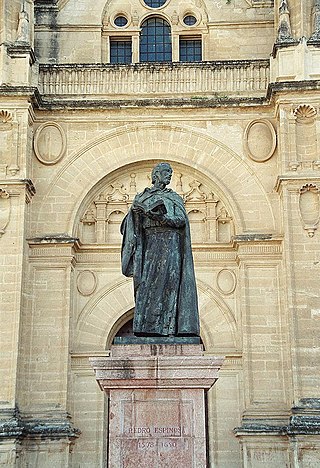
The Royal Collegiate of Santa María la Mayor is a collegiate in Antequera, in the province of Malaga, Spain. It was founded on the initiative of Bishop Diego Ramírez de Villaescusa, at the end of the Diocese of Malaga; Who, considering the large neighborhood that had reached the city obtains from Pope Julio II in 1503 the timely Bula to erect in Collegiate the former church of Santa María de la Esperanza. Eleven years later, the bishop himself provides for the construction of a new collegiate factory, which he called Santa María la Mayor.
3. Tholos de El Romeral
Tholos de El Romeral, situated 2.5 kilometres (1.6 mi) north east of the town of Antequera (Andalusia), is one of the most important examples of early Bronze Age architecture in southern Europe. Tholos de El Romeral, also known as Cueva de Romeral and Dolmen de Romeral, is a megalithic burial site built circa 1800 BCE. It is one of three tombs in the region, the others being Dolmen de Menga and Dolmen de Viera, both situated to the south west.
4. Singilia Barba
The archaeological site of the Roman city of Singilia Barba is located northwest of Antequera, on the grounds of the Cortijo del Castillón. The existence of archaeological remains in this place has been known since the sixteenth century.
5. Arco de los Gigantes
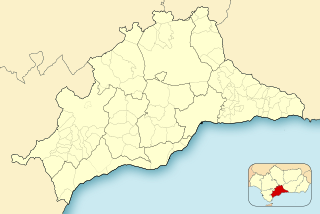
The Arch of the Giants located in Antequera is a construction built by the municipality in 1585 within the approaches of humanism, in order to replace an access in the bend of the Muslim fence in order to evoke with its large semicircular opening the triumphal arches of the classical world.
6. Palacio de las Escalonias
The house-palace of the Marchioness of Las Escalonias is one of the most representative examples of the civil architecture of Antequera and is considered one of the best preserved buildings with the typology of old Antequera palatial house from the early seventeenth century.
7. Aratispi
The archaeological site of Aratispi is located in the southern area of the port of Las Pedrizas, strategically located at a crossroads of natural paths, on the hill of Cauche el Viejo, in the municipality of Antequera.
8. Villa romana de la Estación
The Roman villa of La Estación, located in Antequera, is ascribed to the typology called "peristyle" and specifically its origin dates back to the second half of the first century, detecting its abandonment at the end of the fourth century or beginning of the fifth. It is essentially characterised by a sumptuous residential nuance, reflecting the ideology and purchasing power of its owners, highlighting the quality of the statuary that appeared, mainly, in the area of the peristyle and directly related to the decoration of fountains and ponds.
Share
Disclaimer Please be aware of your surroundings and do not enter private property. We are not liable for any damages that occur during the tours.
